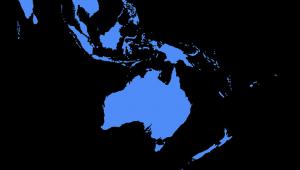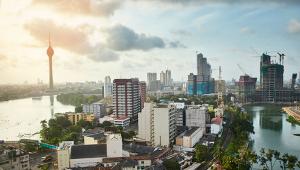Firm performances from South Asia, East Asia and Southeast Asia have bolstered growth, but in light of recent shocks, the bank has slightly trimmed its predictions for the region.
In a supplement to its Asian Development Outlook 2016 report released in March, the bank forecasts growth in the region to be 5.6% in 2016, instead of 5.7%. Next year, however, the bank is confident that growth will be 5.6% as predicted in the March report.
Shang-Jin Wei, chief economist at the ADB, commented: “Although the Brexit vote has affected developing Asia’s currency and stock markets, its impact on the real economy in the short-term is expected to be small.”
He added that “in light of the tepid growth prospects in the major industrial economies, policy makers should remain vigilant and be prepared to respond to external shocks to ensure growth in the region remains robust.”
For East Asia, growth forecasts for 2016 are unchanged at 5.7% and 5.6% in 2017, despite what the report describes as muted activity in Hong Kong and South Korea.
China, however, is on track to meet earlier growth predictions of 6.5% this year and 6.3% in 2017, and the government is expected to continue to use fiscal and monetary stimulus measures.
South Asia is leading regional growth with India at the forefront. The nation’s economy has shrugged off global headwinds and is set to meet the ABD’s March fiscal year 2016 (year to March 2017) projected growth targets of 7.4%. This has been supported by strong consumer spending and an uplift in the rural economy.
In Pakistan, improvements to the energy supply, greater infrastructure and an improved security environment will bolster growth into 2017. Meanwhile the Bangladesh economy will remain robust thanks to the health of its garments sector.
In Southeast Asia, projections for the sub-region from 2016 to 2017 suggest growth will be 4.5% and 4.8%. Solid performances were reported by most economies, driven by private consumption, apart from Vietnam whose agricultural sector has been dented by drought.
A recession in Russia and soft commodity prices have dampened the growth outlook for Central Asia, with the bank’s March forecast cut significantly from 2.1% to 1.7% for 2016. The prediction for 2017 was slightly revised from 2.7% to 2.8%.
According to the report, a slump in the revenue from hydrocarbon exports is impacting fiscal consolidations initiatives in Azerbaijan, Kazakhstan, Turkmenistan and Uzbekistan. Also, lower remittances, especially from Russia, are hurting domestic consumption.
In the Pacific, growth in 2016 is expected to fall sharply to 3.9% for 2016 from 7.1% in 2015, influenced by the impact of Cyclone Winston. Revenues from the tourist industry are more healthy than expected, which has provided a boost to the Cook Islands and Samoa. Vanuatu’s economy is receiving a boost from the reconstruction and infrastructure projects carried out in the wake of the cyclone.
Inflation for the developing economies of Asia, according to the report, will be 2.8% for 2016 and 3% for 2017. This represents a 0.3 percentage point rise for each year from the previous forecasts. This is mostly due to a recovery in the price of oil and food.














